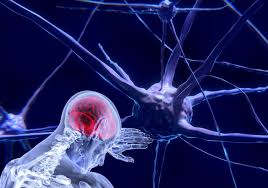Highlights
- •Spliceosome protein SNRNP70 localizes within axonal RNA granules
- •SNRNP70 is required in motor neurons for axonal growth and synaptogenesis
- •Strictly cytoplasmic SNRNP70 can drive key aspects of motor connectivity
- •Cytoplasmic SNRNP70 modulates the local transcriptional landscape
Summary
Regulation of pre-mRNA splicing and polyadenylation plays a profound role in neurons by diversifying the proteome and modulating gene expression in response to physiological cues. Although most of the pre-mRNA processing is thought to occur in the nucleus, numerous splicing regulators are also found in neurites. Here, we show that U1-70K/SNRNP70, a component of the major spliceosome, localizes in RNA-associated granules in zebrafish axons. We identify the extra-nuclear SNRNP70 as an important regulator of motor axonal growth, nerve-dependent acetylcholine receptor (AChR) clustering, and neuromuscular synaptogenesis. This cytoplasmic pool has a protective role for a limited number of transcripts regulating their abundance and trafficking inside axons. Moreover, non-nuclear SNRNP70 regulates splice variants of transcripts such as agrin, thereby controlling synapse formation. Our results point to an unexpected, yet essential, function of non-nuclear SNRNP70 in axonal development, indicating a role of spliceosome proteins in cytoplasmic RNA metabolism during neuronal connectivity.
Introduction
RNA processing, transport, and local translation play a central part in the normal development and function of neural circuits. These processes are extensively regulated by numerous RNA-binding proteins (RBPs) interacting with RNAs inside and outside the nucleus.1,2 In recent years, much progress has been made in understanding molecular mechanisms required for normal RNA metabolism and transport. 3,4,5 Conversely, defects in RBP expression, localization, and function have been linked to numerous neurodevelopmental and neurodegenerative diseases including autism, schizophrenia, bipolar disorders, spinal muscular atrophy, and amyotrophic lateral sclerosis.6,7,8,9 Many RBPs participate in the regulation of pre-mRNA splicing in the nucleus, but some of these splicing regulators are also found in the neurites of developing and mature neurons. For instance, the neuronal splicing factor Nova co-localizes with its target RNAs in the dendrite.10 Moreover, components of the major, U1/U2-dependent spliceosome have been found to localize in the developing axonal growth cone.11 The splicing protein SFPQ, which is enriched in the nucleus, additionally localizes to mouse dorsal root ganglion axons where it regulates RNA granule co-assembly and trafficking of mRNAs essential for axonal viability such as LaminB2 and Bclw.12 We showed that non-nuclear SFPQ is also required for normal maturation of zebrafish motor axons. 13 Notably, another RBP better known for its nuclear functions, U1 small nuclear ribonucleoprotein 70K (SNRNP70), is present in zebrafish motor axons at readily detectable levels,13 although the functional significance of this finding has not been investigated.
SNRNP70 associates with the U1 small nuclear RNA (U1 snRNA) and, together with other subunits, forms the U1 snRNP component of the major spliceosome. SNRNP70 contains a tail domain mediating binding with the Sm proteins, an α helix domain, an RNA recognition motif (RRM) forming contacts with the U1 snRNA, and two low complexity arginine/serine domains involved in interactions with SR proteins. 14,15 SNRNP70 is required for both constitutive and alternative pre-mRNA splicing.16 Its function outside the nucleus is currently unknown.
Here, we show that SNRNP70 localizes to cytoplasmic puncta closely associated with RNA granules within axonal compartments. We demonstrate that the cytoplasmic pool of SNRNP70 is an important regulator of motor axonal growth, nerve-dependent acetylcholine receptor (AChR) clustering, and neuromuscular synaptogenesis. Transcriptomics and functional assays further indicate that extra-nuclear SNRNP70 regulates cytoplasmic mRNA processing. Together, our study identifies a novel function of a major spliceosome protein in neurites, modulating the abundance and motility of transcripts and regulating the production of alternative splice variants during neuronal circuit formation.
Results
SNRNP70 co-localizes with RNAs in developing axons
We examined SNRNP70 distribution in zebrafish using an antibody raised against a highly conserved region of its human homolog. In line with the key role of this protein in pre-mRNA splicing, we detected robust nuclear staining across embryonic and larval tissues including GFP-labeled motor neurons (MNs) in Tg(mnx1:GFP) animals (Figure S1A). As reported previously,13 SNRNP70 was also observed inside motor axons innervating the muscles (Figure S1A) and was often found near neuromuscular junctions (NMJs), large synapses between MNs, and muscle fibers expressing AChRs on the post-synaptic side (Figure S1C).
To further analyze the subcellular localization of SNRNP70, we dissociated and cultured neurons derived from Tg(mnx1:GFP) zebrafish embryos at 28 h post fertilization (hpf). At day 1 in vitro, GFP+ neurons had visible growth cones extending from the soma and in some cases formed simple axonal arbors (Figure 1A). Immunostaining showed that SNRNP70 protein localized to axons of these GFP+ neurons in the form of small puncta (Figures 1A and 1B).







